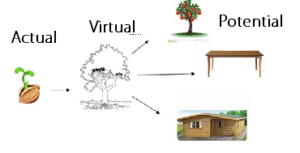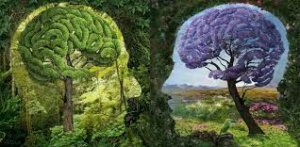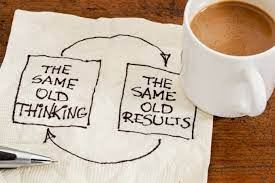
Arquivo para a ‘Linguagens’ Categoria
Culture and the great crisis
After analyzing the aspects of homogenization and cultural colonization, Morin will analyze who the average man is and what culture he consumes, he says:
colonization, Morin will analyze who the average man is and what culture he consumes, he says:
“The language adapted to these anthropos is audiovisual, a language of four instruments: image, musical sound, word, writing. Language is all the more accessible insofar as it is the polytonic involvement of all languages” (page 45) and, therefore, it is not specific to new media that only enhances them, and it involves more an imaginary than “of the game that overflows the fabric of practical life” (idem).
This is because “the borders that separate the imaginary realms are always fluid, unlike those that separate the realms of the earth” (ibidem), so a man can participate in the legends of another civilization than adapt to the life of this civilization, and so Morin prepares to talk about the great crisis or great civilizing night, which Morin calls “great craking”.
As technical quality improves, it mediates artistic quality, says Morin: “they go up in industrialized culture (writing quality of articles, quality of cinematographic images, quality of radio broadcasts), but the irrigation channels relentlessly follow the main lines of the system (page 50).
Morin separates the cultural currents coming from Hollywood into three main currents: the one that “shows the happy end, the happiness, the success; the countercurrent, the one that goes from The death of a Traveling Salesman to No down payment [AC/DC Rock], shows failure, madness, degradation” (p. 51), but there is a third current that he calls ” black”.
This is “the current in which fundamental questions and contestations ferment, which remains outside the culture industry: it can partly usurp, adapt to itself, make publicly consumable certain aspects of, say, Marx, Nietzsche, Rimbaud, Freud, Breton , Péret, Artaud, but the condemned part, the antiproton of culture, its randium is left out” (idem).
Morin describes this anti-climax at the beginning of chapter 5 “The great ‘cracking”: “long playing records and radio multiply Bach and Alban Berg. Pocketbooks multiply Mlaraux, Camus, Sartes. The reproductions multiplied Piero dela Francesca, Masaccio, Césanne or Picasso” (p. 53), culture seemed to be democratized by the cheap book, the disc, reproduction, as recommended by Walter Benjamin, but the result was vulgarization, because the “culture cultivated” is neither the mainstream nor the specific in mass culture.
The imaginary leaves the rites, parties and dances and goes to radio, television and cinema, there “those ghost spirits, geniuses who permanently pursued archaic man and reincarnated in his parties” (page 62), now they are “rushed away by printed culture”, mass culture breaks “the unity of archaic culture which, in the same place, all participated at the same time as actors and spectators in the party, rhythm, ceremony” (p. 62), spectator and show are physically separate.
This transformation of a “party man” follows what we call audience, audience and spectators: “the immediate and concrete he becomes a mental tele-participation” (p. 63(, this mass media (now confused with the networks, which is something else), while “reestablishing the human relationship that destroys the printed material”, “it is at the same time a human absence, the physical presence of the spectator is, at the same time, a physical passivity.” (page 63 ).
Mass culture maintains and amplifies a “voyeurism”, more broadly: “a mirror and glass system, movie screens, television videos, glass windows in modern apartments, Plexiglas in Pullman cars, airplane shutters, always some something translucent, transparent or reflective separates us from physical reality” (pages 72-73) and all this was prior to the new media, depositing to them only this great “cracking”, is to ignore the construction (or historical deconstruction) of the imaginary , folklore and festivals, which began even before the last century with printed culture, enlightenment and idealism.
Attempts to reactivate “cultivated” culture are not lacking, as we have already discussed, through the same mass media that vulgarize and destroy the substance of human culture, there is no lack of vivid works by Van Gogh that Akira Kurosawa animated in cinema, of large public events with “ animated video-mapping” by Vang Gogh (made at the Atelie des Lumiéres, in Paris, photo), who presented in 2018 the work of Gustav Klimt, also animated.
The cultural crisis is not just its own work, its root is the thought and development of a mass culture of idealism, of an objectivism that ignores the human.
MORIN, Edgar. (1997) Cultura de massas do século XX. (20th century mass culture). trad. Maura Ribeiro Sardinha. 9ª. edição. Brazil, Rio de Janeiro, Ed. Forense.
The night of culture and humanism
Edgar Morin considers contemporary culture something broader than what is considered and was theorized as mass culture, for him it goes beyond media culture, which is in full decline, despite reactions from the art world in some segments, in general it deals with death, the dark and contempt for symbols, values, myths and images related to everyday life and the collective imagination, but regional, religious and humanist cultures persist in an act of resistance.
than what is considered and was theorized as mass culture, for him it goes beyond media culture, which is in full decline, despite reactions from the art world in some segments, in general it deals with death, the dark and contempt for symbols, values, myths and images related to everyday life and the collective imagination, but regional, religious and humanist cultures persist in an act of resistance.
The industrial process and the success of performance and productivist values hide what is processed in the spirit, something Morin calls “industrialization of the spirit”, this second colonization is not processed horizontally conquering territories, but vertically penetrating the human soul and obscuring it.
The cultural industry has set in motion a third culture (in addition to classical and natural, I would call original), but there is a human resistance that comes from the original culture of each people and each specific culture, but the idea of colonizing is alive.
The multicultural realities present in mass culture are not autonomous, so the idea is to demolish (or erase) the institutions that can resist this new “colonization”, and resistance can only arise from the cultures of peoples, from their original development of culture and its religions and beliefs.
Although one can criticize the current media culture, social networks are a ties between actors that can be made through them, it does not find a society devoid of culture to be omnipresent, it contains social values and symbols, beliefs and ideologies , and in them the transcendental factors are still impregnated, it is not a separate culture.
In Morin’s view, mass culture integrates and disintegrates at the same time in a polycultural reality, it makes contain, control, censor (also in many cases by the state and by the churches) tending to corrode and disintegrate other cultures.
It is now a cosmopolitan and planetary culture, and it will constitute the first truly universal culture in the history of mankind, while conservative thought considers it plebeian barbarism, left-wing critics consider it an opiate of the people and deliberate mystification , and so the only perspective seems to be the authoritarian one.
In the authoritarian case, the state must control the production and distribution of “cultural goods”, while in the democratic case the large cultural groups must dictate the media controlling the production and distribution of content, here digital media is present.
Both currents agree in the criticism of mass culture, classifying it as a poor cultural product, of low aesthetic quality and without originality (kitsch).
The great solution pointed out by Morin is in the structure of the imaginary: the use of archetypes that order dreams, without the standardization of mythical and romance themes, art is a great reaction in this field, the cultural industry was reduced to archetypes and stereotypes, who outside of these there is no cultural “insertion”, and her prisons are individualized products.
It’s not about accepting diversity, but increasing consumption, just as it did with the pop culture of the 60s, movies, radio or TV shows (now lives and stories) are solely aimed at maximizing profit and audience (likes and fanpages).
In religious terms, syncretism is the most suitable word to translate the tendency to homogenize culture and dictate values and the comicity used to these themes plays the role of destroying its essence and originality, everything is similar or equal.
Children’s cultural content is invaded by themes of adult consumption: they are presented in a simplification that takes them (to adult viewers too) as children.
Even leisure is not just a way of allowing a balance of life, but it is invaded by mass culture, the so-called “resorts”, the beaches and leisure places are invaded by the “cultural industry”, everything within reach, just by an app.
This crisis is neither temporary nor fleeting, a great civilizing crisis may emerge from it, but it is necessary to have hope despite the public blindness.
MORIN, Edgar. (1997) Cultura de massas do século XX. (20th century mass culture). trad. Maura Ribeiro Sardinha. 9ª. edição. Brazil, Rio de Janeiro, Ed. Forense.
Act, potency and agape
What Aristotle defined as potency was conditioned to the act, so the act is a current manifestation, in the example of the figure beside the seed), while potency is what could be (virtually, while virtú) the seed in potency is a tree could its manifestation as being to produce fruits and new seeds, while virtual, in the sense of virtue, is to transform it into a table or even a house.
the act is a current manifestation, in the example of the figure beside the seed), while potency is what could be (virtually, while virtú) the seed in potency is a tree could its manifestation as being to produce fruits and new seeds, while virtual, in the sense of virtue, is to transform it into a table or even a house.
Actual potential actualization is not just the seed that becomes a tree and bears fruit, the main source of change must be completely real and not only correspond to natural potentiality, but that which completes the rest, and this depended on Aristotle’s The first motor that gave meaning to everything, and that Thomas and Aquinas claims to be God, enters the question of conscience.
Here comes Logos or Pathos, since consciousness is always a dictate of reason and will, so for Thomas Aquinas Ethos depends essentially on human will and consciousness, while Logos leads us to a more primordial reason for Being , Pathos moves towards disordered passions and drives, while Logos should lead us to agape and balance.
Potency is thus characteristic of Being and Pathos its distortion, power seen as Pathos is authoritarian and passionate, while power as Ethos is ethical and agapic, in the sense of service done out of gratuitous love to those they are subordinate, so it can until there is asymmetry, but it will only be diversity and never authority in the sense of absolute power as it is united with the Logos.
It is not by chance that Aristotle was tutor of Alexander the Great, and his form of power spread to the peoples, as well as Plutarch in his text “Alexandre (in Parallel Lives”, 1st century): “After this battle of Issus… Macedonians form to take a liking to the other, silver and women, and the way of life of the Asians, becoming so fond of it that, as if dogs, they set out on the trail in search and pursuit of the opulence of the Persians”, is likely. which also influenced the Romans.
That’s how we reach the second war and the dangers of post-modernity, will we leave our childhood civilization and will one day be able to coexist with peoples with different cultures and cosmogonies, we seem to be heading in the opposite direction: polarization.
It was also no different for Jews and Christians, in the nascent community many wanted to have “power” alongside Jesus, in the reading of Mark (Mk 10:36-37) the apostles James and John make a special request to Jesus: “He he asked, ‘What do you want me to do for you?’ They replied, ‘Let us sit one on your right and one on your left, when you are in your glory,’ and the master tells them they don’t know what they’re asking for.
Ai asks if they can drink from the cup that He will drink (referring to their type of death), they keep saying yes, then rebuke them and tell the form of power that exists in civilization (Mark 10: 42-43): “Jesus called them and said: ‘You know that the heads of the nations oppress them and the great ones tyrannize them. But among you, it must not be like that: whoever wants to be great, be your service and whoever wants to be first, be the slave of all”.
So those who govern believers in the same way as the temporal power have not yet understood the potency of the agapic Logos.
The thinking between simplism and simplicity
Naive thinking ignores the complexity, relief and depth of things see them in the superficiality of their appearance, while simplicity initiates a phenomenological process that begins with the appearance of the beholder and then develops a greater perception, in the words of philosophy, the noema, that complements the initial phase of the ability to feel, the noesis.
see them in the superficiality of their appearance, while simplicity initiates a phenomenological process that begins with the appearance of the beholder and then develops a greater perception, in the words of philosophy, the noema, that complements the initial phase of the ability to feel, the noesis.
By defining complex thinking as having three principles: recursive, dialogic and hologrammatical, Edgar Morin thus explains this third that is inseparable from the other two:
“The hologram is a physical image, conceived by Gabor which, unlike ordinary photographic and filmic images, is projected into space in three dimensions, producing an astonishing sensation of relief and color. The holographed object is restored, in its image, with remarkable fidelity. This hologram is made up of coherent light (laser) and a device that makes each point that constitutes this image contain a sample of the system of interference lines emitted by the points of the holographed object” (MORIN, 2003, p. 34).
To explain and clarify certain phenomena it is necessary to use didactic resources that simplify them, however, this pedagogical task cannot mutilate the explanation nor make it absolutist.
There is nothing more complex than reducing it to the simple, as stated by Bachelard, there is no such thing as simple, there is only the simplified, which in most cases mutilates and deforms the phenomenon, inducing thought to an obscure liquidity.
Phenomena of nature are not easily simplified, often the pretension of mastering it even in scientific cases has revealed a perverse face, this has happened from atomic physics to modern communication technologies, it is necessary to predict and investigate adverse effects.
However, the simplicity of seeing the phenomena does not only depend on the culture, which is always diverse, but on the ability to reduce the idea (the eidetic reduction proposed by Husserl), where we go from simple appearance to the experience of consciousness about what it is informed by the senses and how the mind receives them, interpreting what is informed.
Simplifying always requires an analogy or a metaphor, we’ve already discussed it here, and that yes, it is necessary to be simple to receive “new” information with the disposition of a child, with an epoché, say philosophy, with a suspension of judgment, I would say, Cartesian thought .
MORIN, Edgar et al. (2003> Educar para a era planetaria: o pensamento complex como método parra aprendizagem. (Educating for the planetary era: complex thinking as a method of learning in human error and uncertainty). São Paulo: Editora Cortez.
Order, disorder and dialogue
Understanding the process of complexification of nature also means understanding that it is man and that it actually means humanism forgotten in traditional idealist and positivist schemes.
means understanding that it is man and that it actually means humanism forgotten in traditional idealist and positivist schemes.
Thus for Edgar Morin (2001), the paradigmatic issue goes beyond the simple understanding of the theory of science (epistemology or methodology), as it involves the questioning of the frameworks of knowledge we have (gnoseology and what we think is reality) and more Deep ontology (what is the nature of reality), these principles govern the phenomenon of what we know and cannot be separated from physical, biological and anthropo-sociological systems.
It is an open reason, not irrationalism or relativism, but based on the idea that an evolutionary, complex and dialogical knowledge can be built, in which disorder is a part.
Systems develop in a process of entropy, but it is negentropy (the denial of entropy at each stage of evolution) that makes self-organization a living and evolving system.
It defines it as a body that develops and expands, entropy, dispersion and crisis appear in the original organization, but negentropy means new self-organization and if we look at man within it, within nature and in its evolutionary aspect, it returns question of a supernatural order, because it was precisely the opposite path that denied this transcendence.
When the repudiation of naturalism won and took hold, the humanist myth of the supernatural man became the very center of anthropology (and of all other sciences) and the oppositions nature-culture, man-animal, culture-nature took shape. of paradigm.
Of course, the role of man in nature depends on the worldview, animists for example, all non-human realities also have supernatural power, others stand out a God also human as in Christianity (created in the image and likeness of God) and others an ascesis that we are at one end of the scale of evolution (complexity), the Hindu and Eastern religions.
In Christianity, last week we reflected Jesus’ question to the disciples, “Who do they say I am?” and he prepared them for death, for the “disorder” of his death, even though the disciples still understood they wanted to dispute the power, position and positions they would occupy in the ascesis, and Jesus, seeing what they said, will give them a harsh sentence (Mk 9,35): “If anyone wants to be the first, let him be the last of all and the one who serves all!”, do you understand today?.
What is natural and the possibility of knowing
The problem of knowing the world (natural and not cultural, this is what we have) must start from a premise of clearing our minds of cultural convictions, most of them idealistic, that blind us to the possibility of understanding that we do not dominate nature as proposed the Enlightenment, and worse, we run the risk of destroying it and putting civilization in check.
this is what we have) must start from a premise of clearing our minds of cultural convictions, most of them idealistic, that blind us to the possibility of understanding that we do not dominate nature as proposed the Enlightenment, and worse, we run the risk of destroying it and putting civilization in check.
Quoting Edgar Morin in the epigraph of his general introduction of the book “The Nature of NATURE”, he write the second in capital letters even to deify it in the sense that it is still unknown to us, and contains mystery that affects us, as proved by the current Pandemic that still challenges us.
Edgar Morin, opening the first chapter: “The Spirit of the Valley”, quotes Karl Popper: “Personally I think there is at least one problem… that interests all thinking men: the problem of understanding the world, ourselves and our knowledge as part of the world”, so this knowledge is neither definitive nor eternal, as everything evolves and is perishable.
To introduce these convictions, he makes a second quote by Jacob Bronowski: “The concept of science is neither absolute nor eternal”, and he will make a third, which is for the next post.
He begins with 5 convictions that made him start this book and where is his “cogito” his suspension of judgment of everything he thought before, his first conviction of these problems states that he: “holds us to the present, they demand that we let go of it to consider them in depth” (Morin, 1977, pg. 13), and professes his second conviction: “the principles of knowledge hide what, henceforth, it is vital to know” (idem) thus detaches himself from his previous ideas.
His third conviction is the strongest, increasingly convinced that the relationship science Ʌ politics Ʌ ideology [Ʌ in text it´s triangle] when it is not invisible, continues to be treated in an indigent way, through the reabsorption of two of its terms in one of them that has become dominant” (idem) , gives you food for thought.
His fourth conviction is that “that the concepts we use to conceive our society — the whole society — are mutilated and lead to inevitably mutilating actions” (idem).
Finally, his fifth conviction is: “that anthroposocial science must be articulated in the science of nature, and that this articulation requires a reorganization of the structure of knowledge itself” (Idem), so the knowledge we have needs to be modified to from its bases.
He knew that his task was really encyclopedic and vast, that’s why he even isolated himself in a castle (I don’t have the precise data) because his task: “I myself needed exceptional circumstances and conditions’ to move from conviction to action, that is, to work” (idem).
And it is from there that he wrote his complex method with three initial questions: “What does the radical self of self-organization mean? • What is the organization? • What is the complexity?” (page 14).
MORIN, E. The nature of NATURE. Lisbon PUBLICATIONS EUROPA-AMERICA, LDA., 1977.
Between the natural and the Supernatural
The soul (anima in its original Greco-Latin version) was studied by  almost all ancient philosophers, it can be summarized from the Latin “anima mundi” (soul of the world) as a cosmological concept of a ruling force of the universe by which the divine becomes manifested in laws that affect matter, or in the hypothesis of an immaterial force, as something inseparable from matter, is in Plato in the books The Republic and Timaeus.
almost all ancient philosophers, it can be summarized from the Latin “anima mundi” (soul of the world) as a cosmological concept of a ruling force of the universe by which the divine becomes manifested in laws that affect matter, or in the hypothesis of an immaterial force, as something inseparable from matter, is in Plato in the books The Republic and Timaeus.
Marsilio Vicino, Renaissance humanist, who wrote a Platonic Theology, defined it as “The soul can be called the center of nature, the intermediary of all things, the current of the world, the essence of everything, the knot and union of the world” , whatever the concept, it is a part of the natural that may have manifestations unknown to current science, and that is why it is supernatural.
But the natural that man seemed to dominate from the Enlightenment, revealed to the few more mysterious than imagined, at the beginning of the century the uncertainty principle gave rise to quantum physics and a tiny virus challenges us, and we have not overcome it, the relaxation can provoke a new crisis, like a poorly cured patient who wants to do activities that the disease does not allow.
In his book The Nature of Nature, not by chance his first book on his method of complexity, Edgar Morin will describe the Dasein of nature (from physis) as: “All systems, even those we abstractly and arbitrarily isolate from sets of which they are part (like the atom, which is moreover a partially ideal object, or like the molecule), they are necessarily rooted in the physis” (Morin, 1977, p. 133), and quoting Lupasco (creator of the idea of the included third party, state between being and non-being of matter): “A system can only be energetic” (idem).
Energy, complexity and mystery is therefore a characteristic of nature, and we have discovered over the last century that uncertainty must not only be part of a truly scientific method, its absence can lead to dogma and obscurantism.
How the supernatural manifests itself then depends on the cosmovision of each culture, without being confused with it, as it has a unique meaning within the eschatology that sees it, the beginning and end of everything, of the universe and its enigmas.
In Christian culture, the supernatural is present in the human revelation of a God who makes himself small, and the human condition is reduced to take him to the coming of eternity. Jesus forbade the apostles to speak openly about his divinity, but he questioned them (Mk 8.27-29):
“Who do men say that I am?”. They replied, “some say you are John the Baptist, some say you are Elijah, some say you are one of the prophets.” Then he asked: “And you, who do you say that I am?” Peter replied, “You are the Messiah.”
He talked separately with the disciples and was going to explain the kind of death he was going to die.
MORIN, E. THE METHOD 1. A natureza da NATUREZA (The nature of NATURE). Portugal: Europe-America Editions, 1977.
Listening and the crisis of thought
When only fundamentalist and ideological discourse has space, it is because listening to the other side has become difficult, understanding that reality is multiple and complex, that there will not be a monochromatic future that is sustainable, is essential for a new world that is sustainable.
because listening to the other side has become difficult, understanding that reality is multiple and complex, that there will not be a monochromatic future that is sustainable, is essential for a new world that is sustainable.
The understanding of reality, in addition to the facts and worldview of each social and cultural group, can only be expanded in a context of conviviality and respectful listening.
The demand for isolation due to the pandemic could have helped greater cohesion and social solidarity, it even existed in some groups and individuals, but the radical isolation of many groups around self-reference and the reinforcement of group positions has increased.
They perceive reality only through an angle of vision, closed worlds, more isolation and consequently more injustice, in addition to social injustice, that existential one that isolates groups and people, who repeat discourses and narratives only to justify subtle forms of power, is the so-called psychopolitical ( name given by Byung Chul Han), unable to open the vision.
It takes almost a miracle, perhaps the easing of the pandemic will help, but for now what we see are groups that are estranged in search of consolidating power, or taking it over.
The biblical passage that impressed even the Pharisees was the one that Jesus healed the blind and deaf, a clear metaphor so that groups clinging to his vision (political and religious) could understand through the metaphor the need to open their ears.
The passage in Mark says (Mark 7: 31-34): “Then they brought in a deaf man, who was speaking with difficulty, and they asked Jesus to lay his hand on him. Jesus walked away with the man, out of the crowd; then she placed her fingers in his ears, spat and with saliva touched his tongue. Looking up at the sky, he sighed and said: “Ephphatha!” which means: “Open up!”.
More than listening, it is necessary to listen, but to see it is necessary to widen the field of vision.
Complex thinking and humanism
Edgar Morin, Heidegger, Sloterdijk, and more prematurely  Nietszche and Schopenhauer realized the crisis of what we call humanism and which distanced itself from man.
Nietszche and Schopenhauer realized the crisis of what we call humanism and which distanced itself from man.
Some approached more from an ontological perspective such as Heidegger and Sloterdijk as a critic of Heidegger’s humanism, others as an approach and critique of Nihilism such as Nietszche, and Schopenhauer in a more human purpose, his phrases are famous: solitude is the luck of all exceptional spirits and the higher the spirit, the more it suffers.
All these thoughts deserve to be analyzed in the crisis of civilization that we have already entered, it is no longer lurking, it has already penetrated, in our view, it is in the thought of Edgar Morin that it is possible to find a more solid solution to this crisis, although we are moving in the opposite direction.
According to Morin, the core of humanism that we need to revitalize is the one described in Method II: “It is not a question of refusing humanism. It is necessary, as we shall see, to hominize humanism, and therefore to enrich it, basing it on the reality of the Homo complex” (Met. ll, p, 398).
Complex, because the human cannot be described in a linear logic, and cannot be isolated in areas delimited by knowledge (complexus: weaving together), the whole is man, and this is his complexity.
This arises from antiquity with the emergence of the problematic that will be called subjectivity, Karl Popper draws attention to the pre-Socratic Enlightenment, the naturalistic view of philosophy of this time would have submerged man in the web of laws of the material world, not precisely configuring the notion of Being, placed in subjectivist (of the subject) or objectivist (of the physis) aspects.
Morin promotes a review of concepts and methods, both in The Lost Paradigm, and especially in The Method, the recent evolutions of biological sciences, cybernetics and the so-called cultures of man, undergo revisions, highlighting the concepts of “autonomy” , of “love”, of “individual” and consequently of subjective, and of “uberty”.
Woven in the Jewish-Greek-Christian matrix of our culture, traversing the history of Western thought and daily life, humanism assumes orientations that do not exactly coincide with man, and which, in our view, gave an idealist vision to more universal human principles.
For Morin, two revisions are needed in humanism that intertwine and complete:
— The sketch of the homo complex;
—-The hominization of humanism.
To a phrase by an anonymous author (not Einstein’s) that circulates on the internet: “you cannot reach different results from the same thoughts”.
Listen, epoché and meet
In a world that is increasingly closed, polarized and with little exercise in thinking, listening is increasingly a great effort and to know and broaden horizons it is necessary to listen.
exercise in thinking, listening is increasingly a great effort and to know and broaden horizons it is necessary to listen.
Rubem Alves said in his famous text on listening: “I always see public speaking courses advertised. I have never seen a listening course advertised. Everyone wants to learn to speak. Nobody wants to learn to listen. I thought about offering a listening course. But I don’t think anyone will enroll. Listening is complicated and subtle…” and the beautiful text continues.
The poet Alberto Caeiro (pseudonym of Fernando Pessoa) also said something similar: “It is not enough to have ears to hear what is said; there must also be silence within the soul”, hence the difficulty: we can’t stand to hear what the other says without saying something better, without mixing what he says with what we have to say…
Our inability to listen is the most present manifestation due to our little reading and a subtle dose of arrogance and vanity: deep down, we are the wiser, more beautiful and more convinced than others, it is also a denial of otherness, of the relationship with the other.
But wisdom, thought and especially the development of solutions to complex problems and situations of humanity, and we are in one of these moments, demanded of thinkers, statesmen and social activists make a great void to be able to elaborate new thoughts, the Greeks called it “epoché”, suspension of judgment.
For the rationalists, Descartes also elaborated the “cogito”, and for the phenomenologists, the epoché is putting our preconceptions in parentheses in order to hear other perspectives of new horizons and enter a hermeneutic circle that makes up what Hans Georg Gadamer called fusion of horizons.
Those who manage to do these exercises are able to contemplate beauty so much because it needs silence to be “captured”, and knowing how to listen to others means a great capacity for communion, therefore also means an ability to find the deepest part of the Other, and live with greater harmony and joy.

